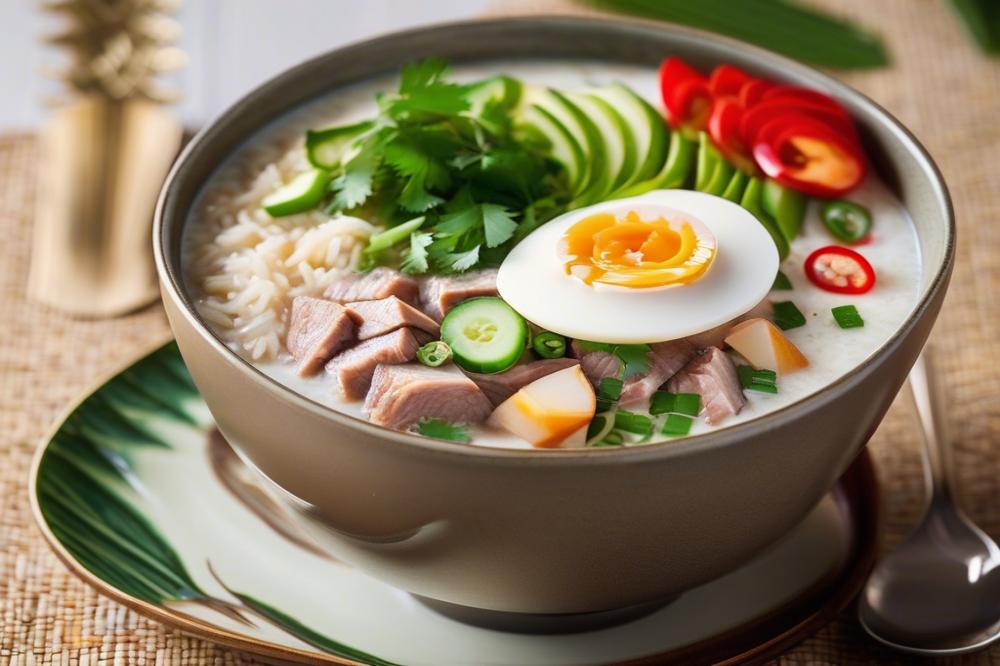Introduction
recipebix.com/how-to-prepare-vietnamese-lemongrass-tofu”>Cháo Lòng is a beloved classic in Vietnamese cuisine. This dish stands out as a comforting bowl of rice porridge, flavored with various offal. Whether enjoyed for breakfast or as a late-night snack, it offers warmth and satisfaction. Street vendors across Vietnam serve this dish, making it accessible to everyone.
Traditionally, recipebix.com/how-to-prepare-vietnamese-lemongrass-tofu”>Cháo Lòng brings together a mix of savory flavors, often enhanced with fresh herbs. Its appeal lies in the unique combination of textures from the tender meat and smooth rice porridge. Many people consider it comfort food, perfect for soothing the soul. Each bowl is not just nourishing; it’s a reminder of home and family gatherings.
The recipe for Vietnamese offal rice porridge is simple yet rich in flavors. Fans of this dish appreciate the way it showcases local ingredients. Various types of offal, such as intestines and liver, are commonly used, allowing for versatility and creativity. The blend of spices and herbs enhances the comforting nature of this traditional dish, making it a staple in many households.
On the streets of cities like Ho Chi Minh and Hanoi, vendors expertly prepare this dish. Their rich broths fill the air with tantalizing aromas, making it hard to resist. Eating Cháo Lòng at a street stall feels like an experience, connecting diners to the vibrant spirit of Vietnamese culture. The dish serves as a delicious reminder of how food can bring people together.
What is Cháo Lòng
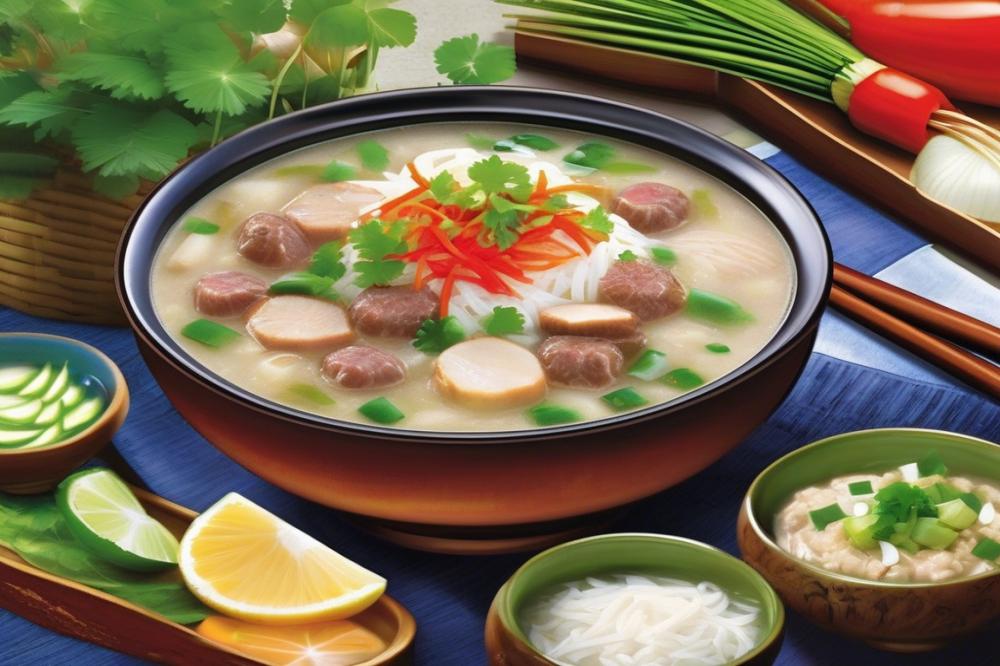

Cháo Lòng is a savory rice porridge that features offal as a main ingredient. This dish is beloved in Vietnamese cuisine for its comforting qualities. Many people find it enjoyable for breakfast or as a late-night snack. It offers a unique blend of flavors that appeal to a wide range of palates. Cooked with rice, this easy recipe often includes herbs, giving it a fresh taste.
Historical Context and Regional Variations
The roots of Cháo Lòng can be traced back to Vietnam’s long history with rice and various cooking methods. Street food vendors in busy markets typically prepare it. Each region of Vietnam adds its twist to the dish. In the north, thicker rice porridge may be favored, while the south tends to have a brothier version. Variations may also stem from the types of offal used. Commonly used ingredients include liver, heart, and intestines, with each part offering distinct flavors and textures.
The Role of Cháo Lòng in Daily Vietnamese Life
This dish holds a special place in the hearts of many Vietnamese people. It serves as comfort food, bringing warmth to cold mornings or rainy days. Often enjoyed with family or friends, it fosters a sense of community. People gather at street stalls or at home, sharing laughter and stories over steaming bowls. Easy to prepare, it is common for households to have their own cherished recipe passed down through generations. Incorporating herbal flavors enhances the dish, making it a staple in everyday meals.
Ingredients for Cháo Lòng
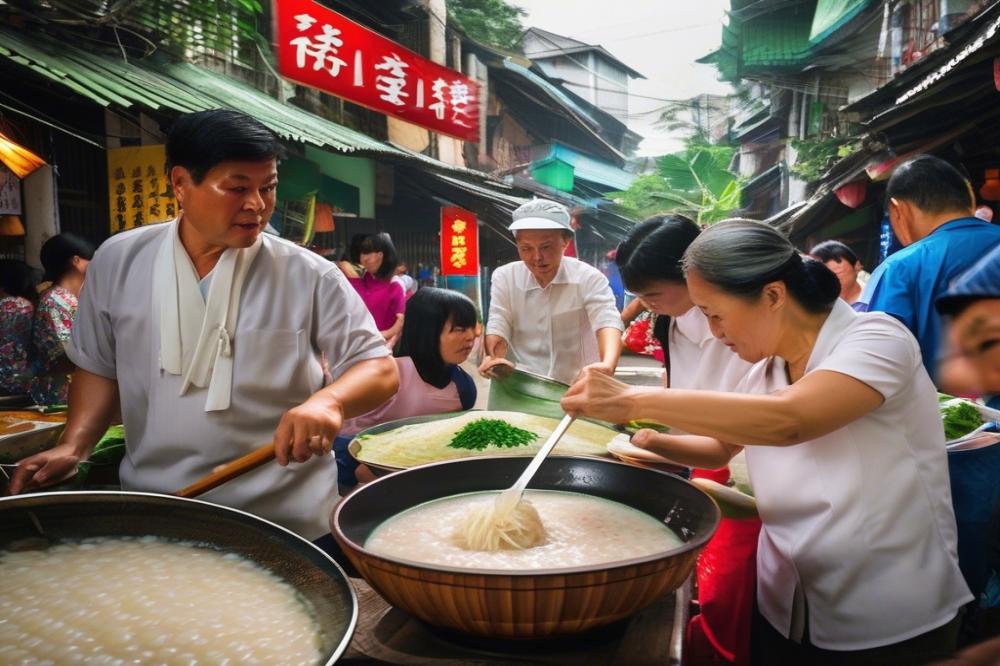

To create a delicious bowl of Cháo Lòng, gather the following ingredients. You will need:
- 1 cup jasmine rice
- 4 cups chicken or pork broth
- 200g pork offal (intestines, liver, heart)
- 1 small onion, finely chopped
- 2-3 cloves garlic, minced
- 1 tablespoon fish sauce
- 1 teaspoon salt
- Fresh herbs (cilantro, green onions) for garnish
This easy recipe emphasizes the savory flavors found in Vietnamese cuisine. People often enjoy this dish as a comforting bowl of rice porridge, perfect for any time of the day. Offal adds a deeper taste that many find appealing.
Nutritional Information
Understanding what you’re consuming is important. A serving of Cháo Lòng typically has around 350 calories. The protein content can be around 20 grams, making it a good choice for muscle maintenance. Fats might come in at about 10 grams, which is reasonable for a hearty meal. Carbohydrates are generally around 50 grams, providing energy.
This dish is not only filling but also brings in various vitamins and minerals. The broth offers hydration while the herbs contribute essential nutrients. Cilantro and green onions pack a punch of flavor along with their health benefits, enhancing the overall dish.
Cooking Instructions
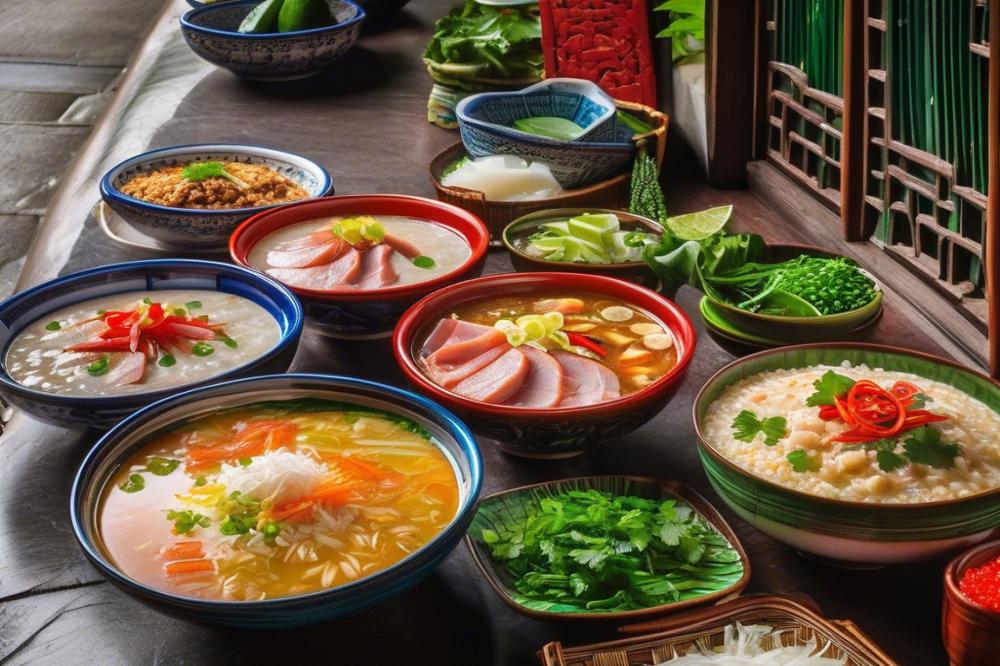

Step-by-step guide to prepare Cháo Lòng
Start by gathering all your ingredients. A bit of preparation will go a long way. Begin with the rice. Wash it thoroughly until the water runs clear. Use about one cup of jasmine rice for a decent portion. Soaking it for an hour enhances the texture. After soaking, drain and set aside.
Cooking rice until soft and porridge-like
After that, place the rice in a pot. Add around six cups of water to maintain that porridge consistency. Bring it to a boil, then reduce to a simmer. Stir occasionally to prevent sticking. Cook until the grains are very soft, about 30 to 40 minutes. The goal is to achieve a creamy texture that feels comforting.
Preparing and cooking offal properly for flavor and safety
While the rice softens, it’s time to prepare the offal. Clean the offal pieces under running water. Popular choices include liver, heart, and intestines. Boil these in another pot with some water, ginger, and salt for flavor. Cooking will depend on the type. The liver takes just a few minutes, while intestines need longer. Make sure the offal is tender and safe to eat.
Incorporating broth and seasoning for savory taste
Once the offal is cooked and cut into bite-sized pieces, add it to the rice pot. Mix everything well. Pour in a rich homemade or store-bought broth for extra depth. Season with fish sauce, salt, and pepper. The dish should come alive with rich flavors. Remember, each ingredient plays a role. Adjust according to your taste preferences.
Final touches with herbs for herbal flavors
Before serving, sprinkle chopped green onions and cilantro on top. Thai basil or chili can add a fresh kick too. Each herb brings unique notes that enhance the dish. Serve it hot in a bowl, with lime on the side. This Vietnamese rice porridge is not just a meal; it’s comfort food. Gather friends or family to enjoy this traditional dish together.
Serving Suggestions
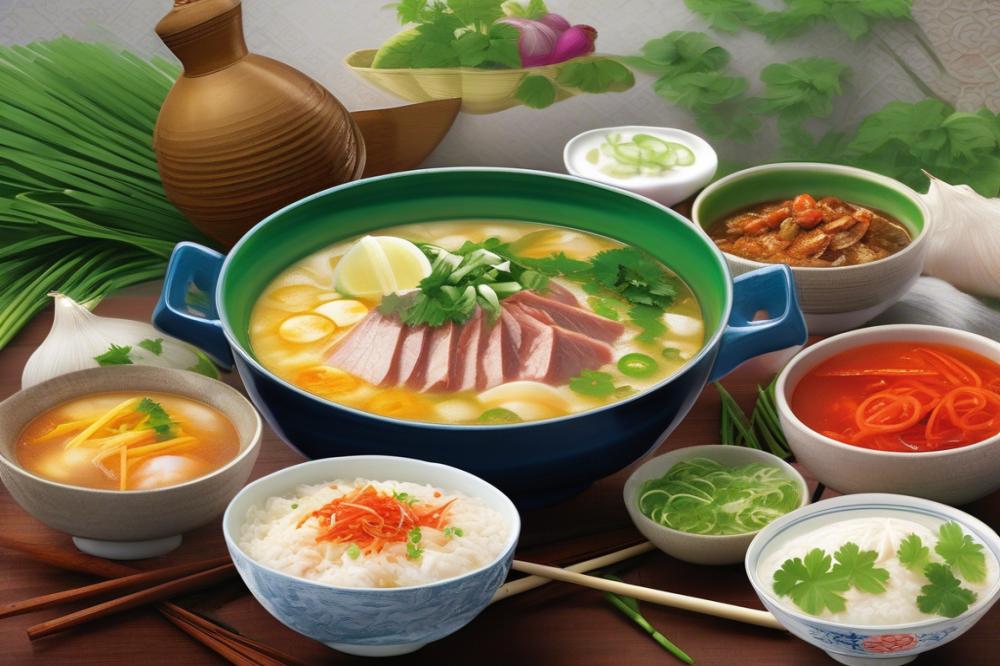

How to Serve Cháo Lòng
Cháo Lòng is best enjoyed hot. Begin by ladling the rice porridge into a deep bowl. Then, layer in the tender offal pieces. A generous sprinkle of scallions adds a nice touch. Finally, drizzle a bit of soy sauce over the top for added flavor. Serving it warm brings out the savory notes of this comforting dish.
Traditional Accompaniments
Fresh herbs are a must. Basil and cilantro lend herbal flavors that brighten the dish. Chili provides a kick for those who enjoy heat. Slices of lime offer a zesty contrast. Diners can squeeze lime juice over the porridge to enhance its taste. It’s common to see these accompaniments presented on the side, allowing guests to personalize their meal.
Variations and Personal Touches
There are many ways to change up this easy recipe. Some people add spices like black pepper or garlic to deepen the flavor. Others might include crispy fried shallots for added crunch. If you’re feeling adventurous, try adding a side of pickled vegetables. This brings a refreshing bite to the richness of the rice porridge. Each tweak creates a new version of this traditional dish, showcasing personal tastes and preferences. Whether you’re following a classic approach or experimenting, the soup remains a cherished part of Vietnamese cuisine.
Cultural Significance of Cháo Lòng
Cháo Lòng serves as a warm embrace in many Vietnamese households. This dish is often associated with comfort food, bringing back memories of childhood and family gatherings. Families prepare the rice porridge with care, blending offal and broth to create a savory experience. For many, a bowl of Cháo Lòng can evoke feelings of nostalgia and love.
The bustling street food culture in Vietnam also plays a big role in the dish’s popularity. Stall owners expertly whip up this traditional dish, attracting customers with fragrant herbal flavors. Diners often enjoy Cháo Lòng as a quick breakfast or a late-night snack. Contributing to the lively atmosphere, the sounds of sizzling pans and cheerful chatter fill the air.
Personal experiences with Cháo Lòng vary, showcasing its significance in different lives. One might recall visiting a street vendor after school, sharing laughter and stories with friends over steaming bowls. Another may remember a loving parent preparing this easy recipe for a sick child, hoping to bring comfort through food. Each story weaves into the rich tapestry of Vietnamese cuisine, highlighting the emotional connections people have with this unique dish.
Final Thoughts on Cháo Lòng
Cháo Lòng captures the essence of Vietnamese cuisine through its rich flavors and comforting texture. This dish offers a delightful balance of savory broth and tender rice porridge, making it beloved among many. It showcases the versatility of offal, highlighting a commitment to using every part of the animal in cooking. The mix of ingredients creates a hearty meal that warms both the body and soul.
Making this recipe at home is an enjoyable adventure. The process may seem intimidating, but you’ll find that the steps are simple and straightforward. With a few fresh ingredients and a bit of patience, you can recreate this traditional comfort food in your own kitchen. Don’t hesitate to experiment! Adjusting spices or toppings can customize it to suit your own taste.
Traditional dishes hold a special place in modern cuisine. They remind us of our roots and connect us to stories from the past. In a world where food is often fast and convenient, taking time to prepare meals like this one brings joy and satisfaction. Memories of shared meals and family gatherings are precious. By embracing such recipes, we honor culinary traditions that might otherwise fade away.

